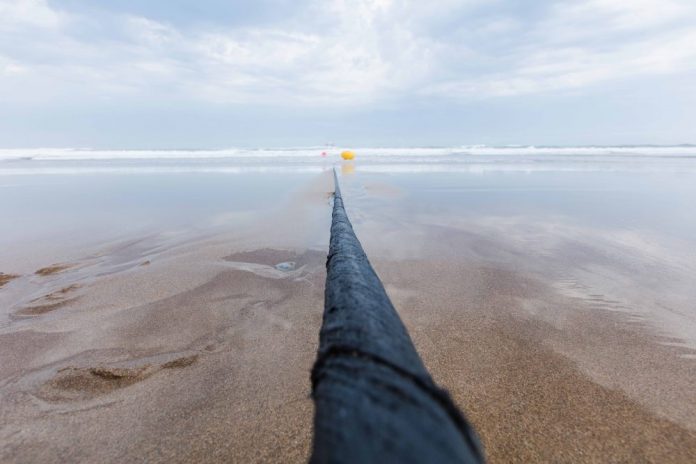In 2016, Facebook partnered with Google and Pacific Light Data Communication Co. Ltd to build a trans-pacific cable. This undersea cable is connecting Hong Kong to Los Angeles and has a capacity of 120 Terabits per second. In May of 2016, Facebook partnered with Microsoft and Telxius to start on a trans-atlantic undersea cable. In a very short span of time, Microsoft announced the completion of the Marea cable on September 21st, 2017.
On June 13th, 2017 work was underway to run the undersea cable that would connect Virginia Beach, Virginia and Bilbao, Spain.
“Completed in less than two years — nearly three times faster than is typical — Marea is a powerful example of the important role the private sector has to play in connecting the world.” said Suresh Kumar, Corporate Vice President, Microsoft Cloud Infrastructure & Operations. “It also set a new standard for subsea cables because it is designed to meet today’s demand and evolve with the progress of tomorrow”.
Marea: a new ‘open’ design
Najam Ahmad, Vice President of Network Engineering at Facebook said “We’re always evaluating new technologies and systems in order to provide the best connectivity possible.”
Being engineered with a new “open” design allows for the Marea cable to evolve with technology over time. An open design allows for easier equipment upgrades which leads to lower costs and shorter upgrade cycles.
According to Kumar, “This ability to interoperate with many different kinds of networking equipment brings significant benefits including lower costs and easier equipment upgrades, leading to faster growth in bandwidth rates.”
Internet redundancy
Marea was designed to not run in parallel to current undersea cables. “Being physically separate from the other cables helps ensure more resilient and reliable connections for customers in the United States, Europe and beyond” said Kumar.
The Marea trans-atlantic cable stretches over 4,000 miles under the atlantic. The cable was engineered to support 160 terabits of data per second. That would be the equivalent of simultaneously streaming 71 million HD movies. For comparison, the trans-pacific cable can support up to 120 terabits of data per second.











